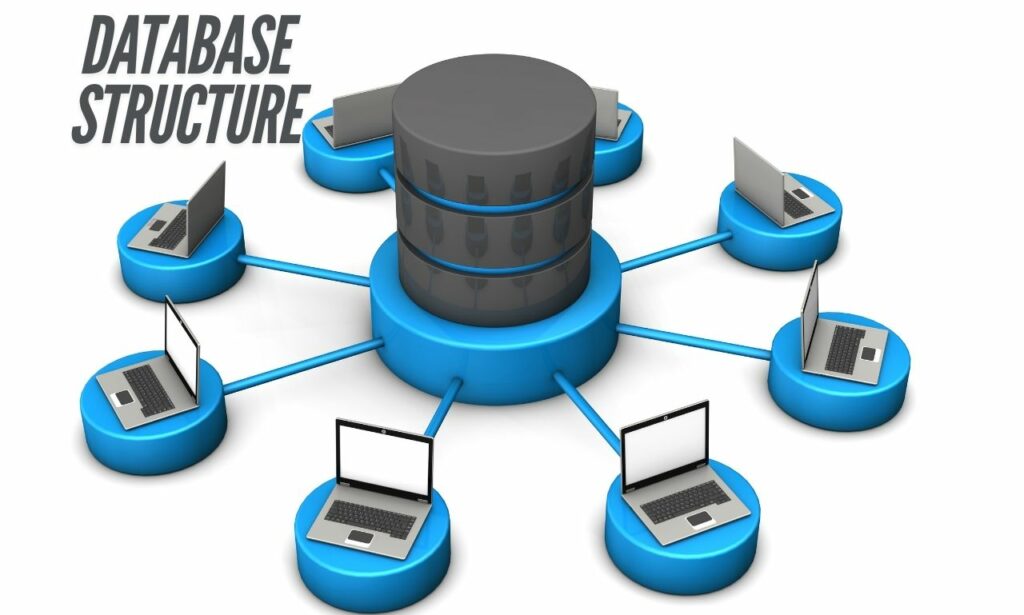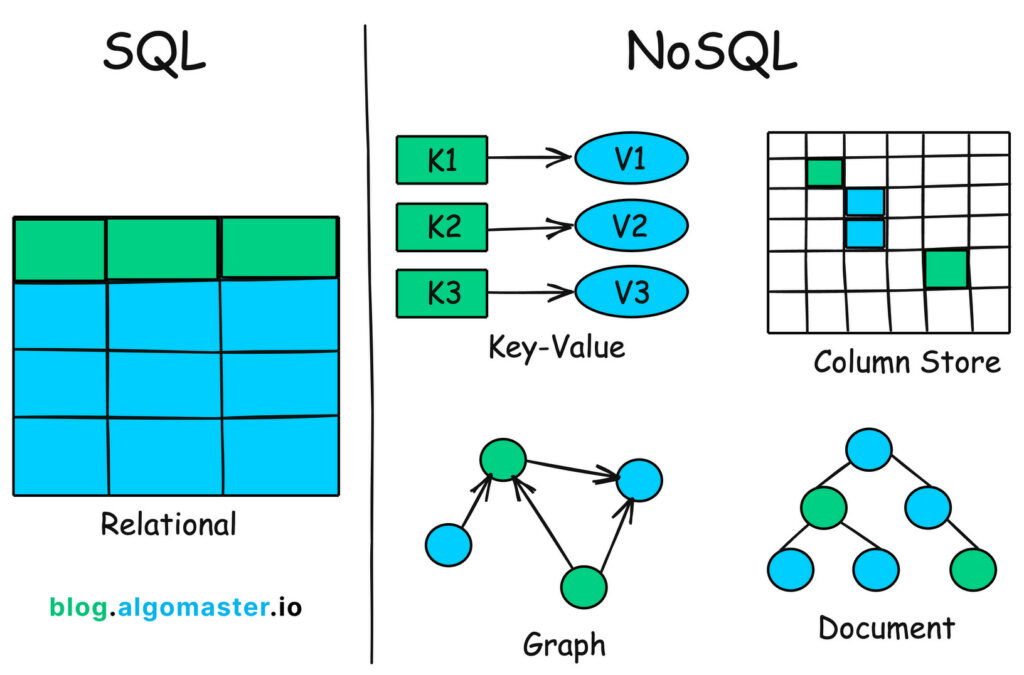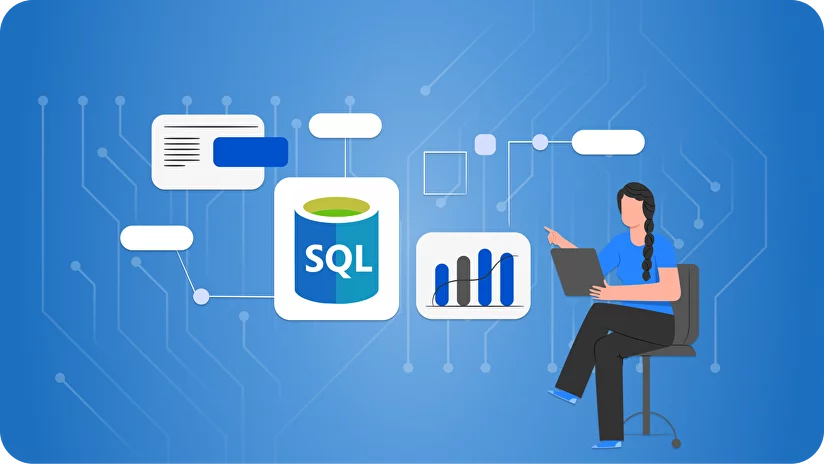In today’s data-driven world, databases play a crucial role in application development. Whether you’re building a small-scale project or a large enterprise system, understanding the differences between SQL (Structured Query Language) and NoSQL (Not Only SQL) databases is vital. This post will provide a comprehensive introduction to database management, compare SQL and NoSQL databases, and help you decide which type suits your project needs.
We’ll explore their core features, use cases, and how they fit into modern application development. By the end of this guide, you’ll have a solid understanding of when to use SQL or NoSQL for your database needs.
1. What is Database Management?
Database management refers to the process of organizing and maintaining data using database management systems (DBMS). A DBMS allows developers to efficiently store, retrieve, and manage data, ensuring data integrity and security.
Databases are categorized into two main types:
- SQL Databases: These are relational databases that use a structured query language for managing data.
- NoSQL Databases: These are non-relational databases designed for flexibility, scalability, and high-performance data handling.
Before diving deeper into SQL and NoSQL, it’s important to have a strong understanding of the backend technologies and how they interact with databases. For a primer on using Node.js for backend development, refer to this Introduction to Node.js and its Uses.
2. Understanding SQL Databases
SQL databases are relational databases that store data in structured tables. These tables have predefined schemas, ensuring consistency and reducing data redundancy.
Key Features of SQL Databases:
- Structured Data Model: Data is organized into rows and columns.
- ACID Compliance: SQL databases support Atomicity, Consistency, Isolation, and Durability, which ensures reliable transactions.
- Complex Queries: SQL offers powerful querying capabilities for complex data manipulation.
- Strong Data Integrity: Due to the strict schema, SQL databases provide strong data integrity and relationships between data.
Examples of SQL Databases:
- MySQL
- PostgreSQL
- SQLite
- Microsoft SQL Server
When to Use SQL Databases:
- When you need a well-structured schema.
- For applications requiring complex queries.
- When data consistency and integrity are critical.
For developers looking to implement styling in their web projects alongside database interactions, understanding basic frontend technologies is essential. To get started, explore the CSS3 Basics: Styling Web Pages.

3. Exploring NoSQL Databases
Unlike SQL databases, NoSQL databases are designed for unstructured data and do not rely on a predefined schema. They provide flexibility and scalability, making them ideal for handling large volumes of diverse data.
Key Features of NoSQL Databases:
- Schema-less Design: NoSQL databases do not require a fixed schema, allowing for flexible data models.
- High Scalability: They are designed to scale horizontally, making them suitable for big data and real-time applications.
- Variety of Data Models: NoSQL databases support different data models, including document, key-value, column-family, and graph databases.
- Optimized for Performance: They excel in handling large amounts of data with low latency.
Examples of NoSQL Databases:
- MongoDB (Document-oriented)
- Redis (Key-value store)
- Cassandra (Column-family)
- Neo4j (Graph database)
When to Use NoSQL Databases:
- When your data structure is dynamic or evolving.
- For real-time applications like social media platforms.
- When you need to handle large-scale data across multiple servers.
To gain insights into event-driven programming, which often interacts with NoSQL databases in modern web applications, you can read this Comprehensive Guide to Mastering JavaScript Events.
4. Comparing SQL and NoSQL: Key Differences
Let’s break down the main differences between SQL and NoSQL databases:
| Criteria | SQL | NoSQL |
|---|---|---|
| Data Model | Relational (tables) | Non-relational (varied data models) |
| Schema | Fixed schema | Flexible schema |
| Scalability | Vertical (scaling up) | Horizontal (scaling out) |
| Use Case | Complex queries, transactions | Big data, real-time applications |
| Examples | MySQL, PostgreSQL, SQLite | MongoDB, Redis, Cassandra |
Pros and Cons of SQL:
Pros:
- Strong data consistency
- Excellent for complex queries
- Reliable data integrity
Cons:
- Limited scalability
- Rigid schema
Pros and Cons of NoSQL:
Pros:
- Flexible and schema-less
- High scalability
- Fast data processing
Cons:
- Lacks ACID compliance in some cases
- Limited query capabilities

5. Choosing the Right Database for Your Project
The decision to use SQL or NoSQL depends on your application’s requirements. Here are some considerations:
- If your application requires complex queries and transactions, an SQL database is the better choice.
- For high-performance, scalable applications dealing with large datasets, consider using a NoSQL database.
- If your data model is well-defined and static, SQL provides strong data integrity.
- When dealing with unstructured or semi-structured data, NoSQL databases offer the flexibility you need.
For backend developers interested in managing databases and APIs effectively, check out this introduction to Node.js, which provides insights into building scalable applications.
6. Integrating SQL and NoSQL in a Hybrid Approach
In some scenarios, a hybrid approach using both SQL and NoSQL databases can offer the best of both worlds. For instance, you might use an SQL database for transactional data and a NoSQL database for real-time analytics.
Example Use Case:
- An e-commerce platform could use MySQL for storing user and order data (structured), while MongoDB handles product catalog data (unstructured) with flexible schemas.
“Choosing the right database is like choosing the right tool for the job—understanding your project requirements is key to making the best decision.”
Conclusion
Understanding the differences between SQL and NoSQL databases is fundamental for making informed decisions about database management in your projects. SQL databases offer strong consistency and structured data handling, while NoSQL databases provide scalability and flexibility for diverse data types.
Whether you’re building a simple application or a complex, scalable platform, knowing when to use SQL or NoSQL can significantly impact your application’s performance and scalability.
To further enhance your backend development skills, dive deeper into this guide on mastering JavaScript events and explore how to style your frontend with this CSS3 basics guide.









